A
fter my brief mention of Sophia Coppola's Marie Antoinette two days back I've been giving some thought to an occasional predicament wherein the artist finds him/herself precisely dictated to with regard to how a story is to be told or depicted. Hitler may not be humanized; I have long regarded Grant Morrison's New Adventures of Hitler to be his best work, but it remains out of print after almost twenty years. Riefenstahl's Olympia may not be discussed without holding the filmmaker to account for the whole of the Holocaust, etc. This holds true also with Coppola's subject; modern France is built upon the events of the Revolution and so the story is carved in stone.Karin Badt's oct 2006 review of the film outlines that story and castigates the filmmaker:
Coppola has blithely stated she could not care less about the political context of her subject. Marie Antoinette was not interested in politics so why should she be? Her bravado ignorance is astonishing.It is implicit that the storteller is in some way wrong in imagining the events of a time prior to and untempered by history's outcome. Moral disdain is to be backdateable, and has no statute of limitations. Next the castigator, with her history book open before her, slips on a couple of problems:
For a film treating the most volatile, complicated time in France 's history -- where democracy and terror forged templates for the modern world -- it is indeed astonishing that so little happens. Coppola oddly did not take advantage of the rich details of Marie Antoinette's real life to complicate her vision.
She was executed, along with her husband, not as a symbol of decadent monarchy but as a political traitor.This overlooks the fact that the winning parties in a political uprising get to *define* treason. In England in 1649 King Charles I was executed by the revolutionary forces for High Treason, and eleven years later the monarchy was restored and all the other crowd (most of whom by now had to be exhumed), who had brought down the King and instituted Parliamentary rule, were executed for the same crime.
The central and best part of the movie was its treatment of the failure of intimacy in the bedroom and its power to wither the human spirit:
The intense attention given her initial inability to have children was not a psychological issue, as portrayed in the film (Dunst is mortified about what the other ladies will think), but crucial to France 's position in Europe. The seven-year barren phase that Coppola casts as Marie's inability to seduce an asexual, dumpy husband, despite her charming curves, was not a lust problem but a medical problem. Louis XVI's member was too big to allow for a comfortable erection; an operation, cutting the foreskin, led to the dynasty's continuation.The calamities of the bedroom not a psychological issue? What an astonishing statement! And it's not just 'the other ladies' that want to know about it. Our daily news clamors with the noise of it from the bitter greed of Mrs McCartney to Heath Ledger alone in his apartment with the sleeping pills.
George Androutsos, History of Medicine, Faculty of Medicine, University of Ioannina, Greece, on a website titled The History of Circumcision, finds Louis' particular problem well worth a 3752 word essay and in it he asseses the psychological impasse:
The truth about Louis XVI's marital difficulties : Could the phimosis of Louis XVI (1754-1793) have been responsible for his sexual difficulties and his delayed fertility?
Two things should be considered. Firstly, the strange relation with his own body : Louis XVI must have viewed his body as a traitor and must have been deeply troubled by it. Secondly, it is probable that he took refuge in silence.
Winding up on a less serious note, it should be remembered that a crucial rule in a pictorial medium is that you should not introduce a concept unless you intend to show it. Thus in the film there is understandably no mention of the circumcision, or whatever Louis' operation is to be called. Badt above states its occurrence as a fact while the more knowledgeable Androutsos writes,
Did he prepare himself -- as generations of historians have maintained -- for a cut so hypothetical that it left no mark in any document of the era? In truth we have no text giving precise details, either on the date of the operation, or its exact nature, or the identity of the surgeon who assumed responsibility. We must rely therefore on guesswork...It always confounded me that in looking at late depictions of 'The Circumcision of Christ,' there is no way you could reconstruct exactly what happens at such a ceremony from these assorted paintings and engravings. The players are just arriving in their Sunday best, or waiting in the anteroom. The rest was alaways a mystery. However there appears to have been an iconographic tradition for the depiction of it that flourished in the mid-1400s, and of which this panel, attributed to the master of the Tucher Alterpiece, is a fine example.

(sorry I don't have a colour repro)
Labels: screen1
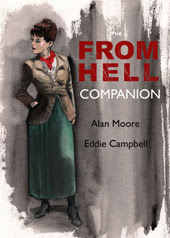



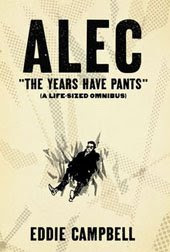
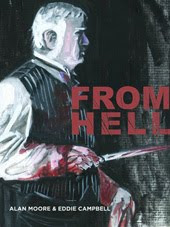

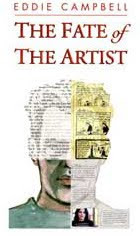
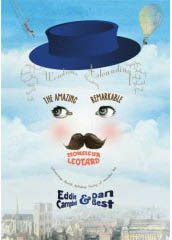





8 Comments:
I'm a big fan of Morrison's "Bible John," but hey.
No one's going to be allowed to deal objectively with Hitler. There's just too much blood under the bridge. Maybe in a hundred years.
Marie Antoinette and Hitler both got what was coming to them. So what's the harm in taking a fresher look at their lives?
I just picked up a book of various "masterpieces" depicting various parts of the life of Jesus Christ (The Life of Christ in Masterpieces of Art by Marvin Ross). But the circumcision stuff isn't there.
What's with the spectacles (or something resembling specs) on the dude's face?
funny you mention the specs. the only color shot of the painting I can find online only has the detail of the guy's face and it's at
'antique specatcles and oter visual aids'.
http://www.antiquespectacles.com/topics/religion/paintings/paintings.htm
'rivet specatcles', second along top row
Are there relics of the Holy Foreskin knocking about, or did they just throw it away? I think we should be told.
Regarding Hitler and co., those very arguments have been percolating again for me over the past few weeks as I've been getting to grips with reworking my Reverbstorm comic series as a single volume. Pains me no end that 270 pages of my best comics work is essentially unseen and unknown by most people. Writer Dave Britton's "incorrect" presentation of his fascist characters caused us no end of trouble.
Most memorable occurrence for me (aside from, er, trouble in the law courts) was the London comics shop (I forget which one) which spluttered that they "didn't take anything to do with the Second World War". Oookay...
I completely agree with your position on Marie-Antoinette. True, she and her husband were executed as traitors, but in their own eyes, they were aiding not the foreign enemies of France in wartime, but friendly fellow monarchs intent on restoring the rightful monarchy in France.
Now, I have more of a problem with Louis the XVI's phimosis. According to recent research, the phimosis and subsequent operation would have arisen in the imagination of Stefan Zweig, whose biography/novel of Marie-Antoinette walks a fine line between fiction and non-fiction.
According to the excellent and well-documented biography by Simone Bertiere, unfortunately not yet translated into English, Louis the XVI's impotence was purely psychological. It was completely cured, not by any circumcision, but by a few counseling sessions with his brother-in-law, Emperor Joseph II, who also had a serious talk with his sister Marie-Antoinette.
They are not spectacles, this is the first recognised picture of an android and it was an illustration for the mid 1400's work '101 uses for Androids, an illustrated comic book' (this is also the first time the words comic and book appear together, though the title means the book has comical elements). The collar around the baby's head was to prevent it from biting at the stiches after getting spayed. It was later renamed 'The Circumcision of Christ' when it became non pc to spay babies.
Interesting but true...
God, that baby looks depressed.
I don't blame him, of course.
if you want to know more about early renaissance portraits of christ's sacred cock, i would recommend highly, The Sexuality of Christ in Renaissance Art and in Modern Oblivion by Leo Steinberg. He has a whole chapter on the iconography of the circumcision, a more common motif then you are giving it credit for.
Post a Comment
Subscribe to Post Comments [Atom]
<< Home